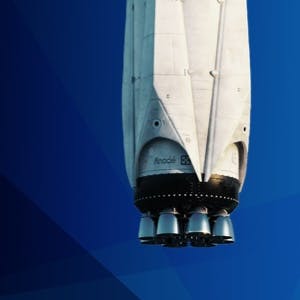- Home
- All updates
- EDGE Insights
- Industries
- Company Search
- My Watchlists (Beta)
All Updates
China successfully completes rocket engine test for moon landing
EKORE raises EUR 1.3 million (~ USD 1 million) in seed funding to strengthen platform
Culina Health raises USD 7.9 million in Series A funding to expand offerings and expand team
ViGeneron receives IND clearance for VG801 gene therapy
Reflex Aerospace ships first commercial satellite SIGI
Vast partners with SpaceX for two private astronaut missions to ISS
Carbios appoints Philippe Pouletty as interim CEO amid plant delay
BlueQubit raises USD 10 million in seed funding to develop quantum platform
Arbor Biotechnologies receives FDA clearance for ABO-101 IND application
Personalis partners with Merck and Moderna for cancer therapy development and investment
COTA partners with Guardant Health to develop clinicogenomic data solutions for cancer research

Space Travel and Exploration Tech
China successfully completes rocket engine test for moon landing
-
A Beijing space research institute has successfully tested a new rocket engine claimed to be twice as powerful as its US counterpart used in the Artemis mission.
-
The upper stage rocket engine, which can generate a 25-ton force, will be used to launch China’s Long March 9 rockets (still under construction) which will be used in future lunar missions.
-
The test launch marked the world's largest closed expander cycle engine test run according to the China Aerospace Science and Technology Corporation (CASC). Closed expander cycle rocket engines are currently the most efficient power source for human space travel. It does not require rockets to carry extra gas to power the pumps as it can convert small amounts of liquid hydrogen fuel into high-pressure gas using waste heat.
<ul><li> Analyst QuickTake: The space race between the US and China heats up further with the testing of the new rocket engine adding more pressure to the Artemis 1 mission (NASA's first mission to the moon since the Apollo mission in 1972), which was delayed after the second launch attempt failed due to fuel leaks. China announced its plans to send astronauts to the moon by 2030, while NASA is aiming for 2025. China has already deployed the unmanned Chang'e 5 mission to the Moon in 2020 to gather and return rock samples and has also planted a Chinese flag (deliberately bigger than that of the US) on the lunar surface. Chinese astronauts are currently excluded from the ISS as the US law bans NASA from sharing its data with China, which resulted in China building their own space station, Tiangong, which launched in April 2021. China is the third country (after Russia and the US) to have sent astronauts to space and build a space station. China has upped its game in the space race in recent years although their government spending on space technologies in 2021 was ~1/5th of that of the US.</ul>
Contact us
By using this site, you agree to allow SPEEDA Edge and our partners to use cookies for analytics and personalization. Visit our privacy policy for more information about our data collection practices.